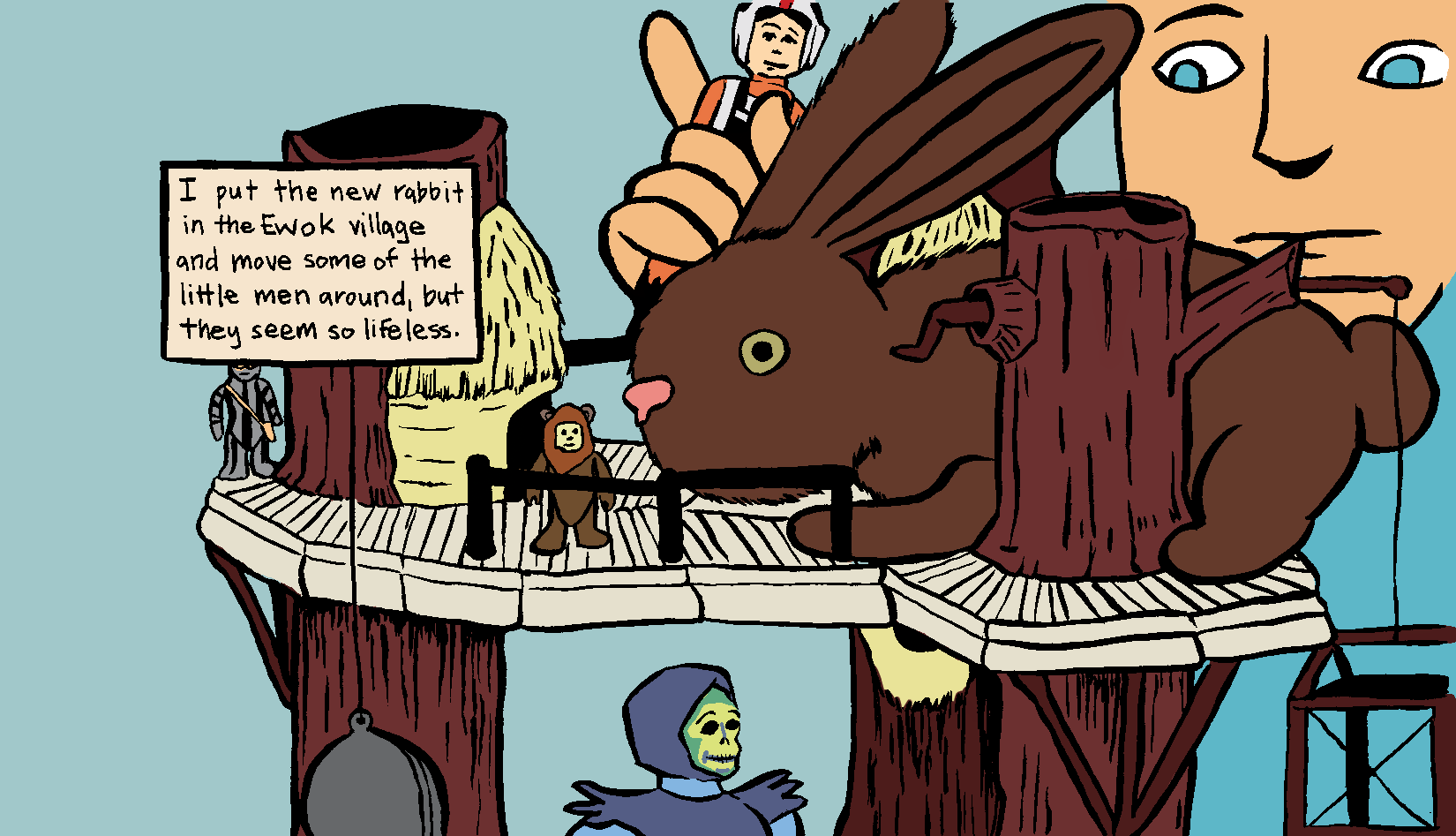Grant Thomas never intended to stay permanently in his hometown of Champaign, but when he was offered the opportunity to teach art at his childhood grade school, he decided to stick around. Thomas has now taught art in Champaign schools for 19 years, and his children are the eighth generation of his family to live in Champaign county. I recently corresponded with Thomas to learn more about his comics and how teaching has influenced his own art-making. Here’s what he had to say:
Some responses have been edited for clarity and length.
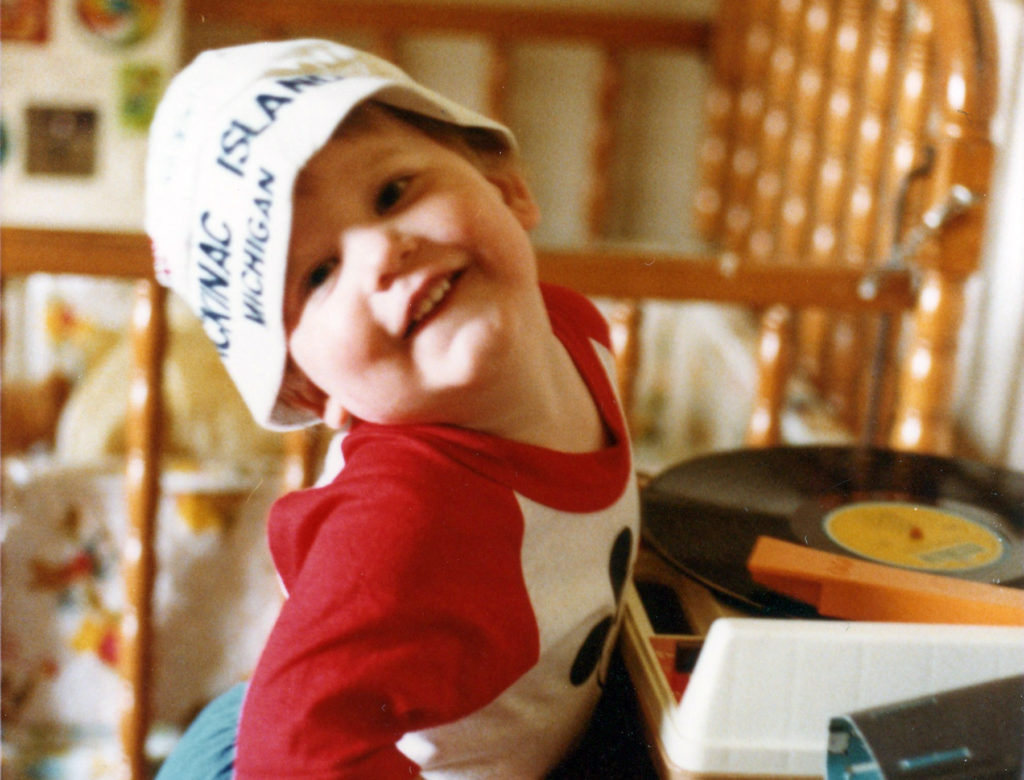
Smile Politely: Can you talk about the progression of your art making? Why comics?
Thomas: When I began teaching art, I realized that I was watching my students create all this amazing artwork, yet I wasn’t really making any art myself. I began getting up a little bit earlier to make art before I went to work, so I could scratch that creative itch. I know there’s a lot of talk about getting up early so you can be more productive and working on your “side hustle,” but honestly I just wanted some time to myself to be human before I gave my time to the rest of the world.
In art school, I felt like we were supposed to make these “important” images on large canvases. Drawing well was kind of scoffed at and abstraction reigned supreme. After art school, I was interested in making stories, but didn’t really have the resources to make movies. Making comics was a simpler way to tell stories visually and I enjoy drawing.
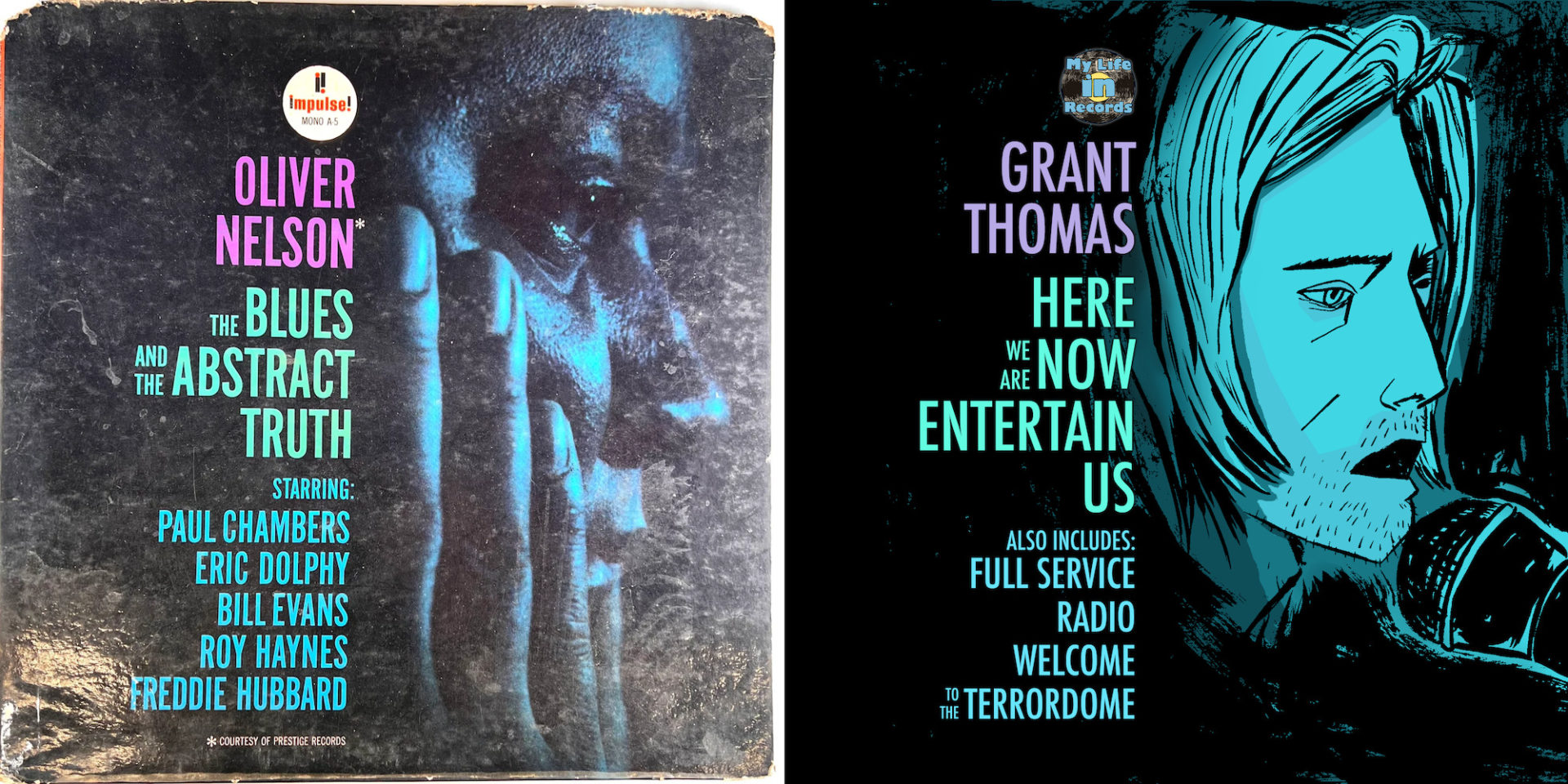
SP: When you are starting a new project, can you walk us through your process? Do you have a clear idea of how you want it to turn out before you begin, is there a lot of experimentation or improvising along the way?
Thomas: For my more straightforward stories that you might find in the My Life in Records series or Medusa, I know the general direction I’m going when I sit down to write the story. Some books, like King Pellinore and the Questing Beast or Sunder Citadel, involve a lot of doodling and folding which reveals unexpected stories. For historical books, like Takanka and Killer Hats, I do a lot of reading and take notes as I go.
These days, I do the bulk of my writing and plotting during seasons when I am not teaching, like Spring Break or in the summer. I don’t really write full scripts. I make an outline on a page in my sketchbook and put the dialogue in the outline. Next, I make little thumbnail sketches of each page of the story and make notes about what is going to happen on each page. Then I draw a “dummy book” which is basically a fairly detailed sketch of each page drawn at the size of the final printed page.
While I’m working on the “dummy book,” I research fonts that will fit with the style of the book or other imagery that I want to use in the story. When I was working on King Pellinore and the Questing Beast, I geeked out over a lot of illuminated manuscripts to find animals and floral motifs to use as inspiration.
I draw the final artwork on Bristol board with blue colored pencil and india ink. The drawings are usually 120%-200% larger than the final printed size. (This is an old illustrator’s trick: if you shrink your drawing, it hides a lot of mistakes.) Finally, I scan the drawings and add colors and screen tone in Photoshop.
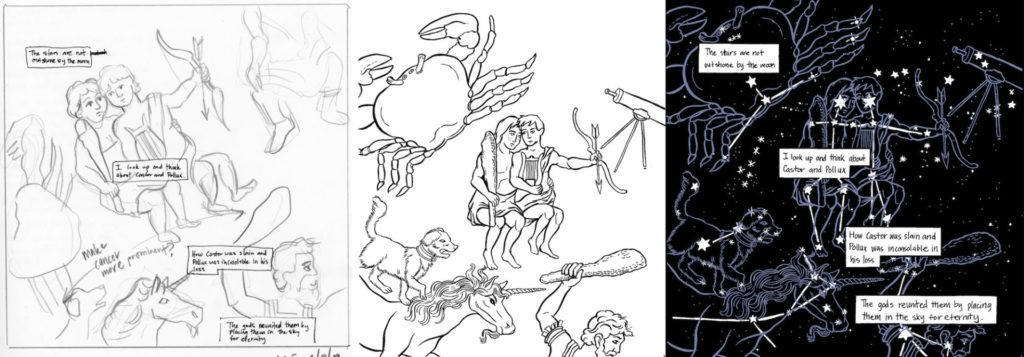
SP: How does being a teacher inform your creative and artistic process? How do your students respond to your comics? Do you ever create anything just for them?
Thomas: A lot of the early My Life in Records stories-especially the one about the kids being really into Star Wars, were inspired by overhearing kids talk about watching the Clone Wars TV series. It reminded me of when my brothers and I were absolutely obsessed with Star Wars in the 80s. My mother banned it as a topic of conversation at the dinner table, because she was so tired of hearing about it all the time!
I talk a lot about the kind of practices and disciplines artists need to work on in order to hone their craft. I share pages from my sketchbook during those discussions to talk about the process of developing ideas, but I rarely talk about my comics with them.
Most recently, we were making bird prints with a group of fifth grade students and I shared some of my Instagram reels with them that showed my printing process.
I’m not sure I make work for my students directly, but every time I’m planning a new lesson, I make a teacher example with the same materials I’m planning on having the students use just to make sure there aren’t any pitfalls I’m overlooking before presenting the project to the students. I usually make a demonstration piece each time I teach a class, so at the end of the year I have a lot of half-finished pottery, watercolor paintings, and weaving projects.
SP: Tell me about the pieces you had on display at Boneyard this year. How was the experience for you? Have you participated at Boneyard in the past?
Thomas: I participated in Boneyard about 10 years ago, but I got busy because my kids were young, and I kind of lost track of it for a while. This year, I reached out on the Facebook group that 40 North had set up and Greg Stallmeyer and EKAH invited me to join them at the ReGroup gallery. I had some of my monster prints and a few bird prints hanging up. I was there while the gallery was open selling comics and prints.
I really enjoyed being a part of Boneyard this year. It was great to meet new people and reconnect with folx I hadn’t seen since before COVID.
SP: You recently showed the process of creating a maze book on your Instagram — which was mesmerizing and fascinating by the way — how does your approach differ for physical comics vs web comics?
Thomas: All of my comics start in my sketchbook even if they end up being drawn with my Wacom stylus. I’m just more comfortable playing and folding paper than I am with a computer. The Levitating Nuns book started with little scribbles on a piece of printer paper, but I drew the final art completely on the computer. In my early 20s I played with something called the Tarquine Engine, which unfortunately is in the internet graveyard these days. It allowed artists to be able to tell non-linear stories where the story could be kind of labyrinthine with multiple different readings, but even those comics started on paper.
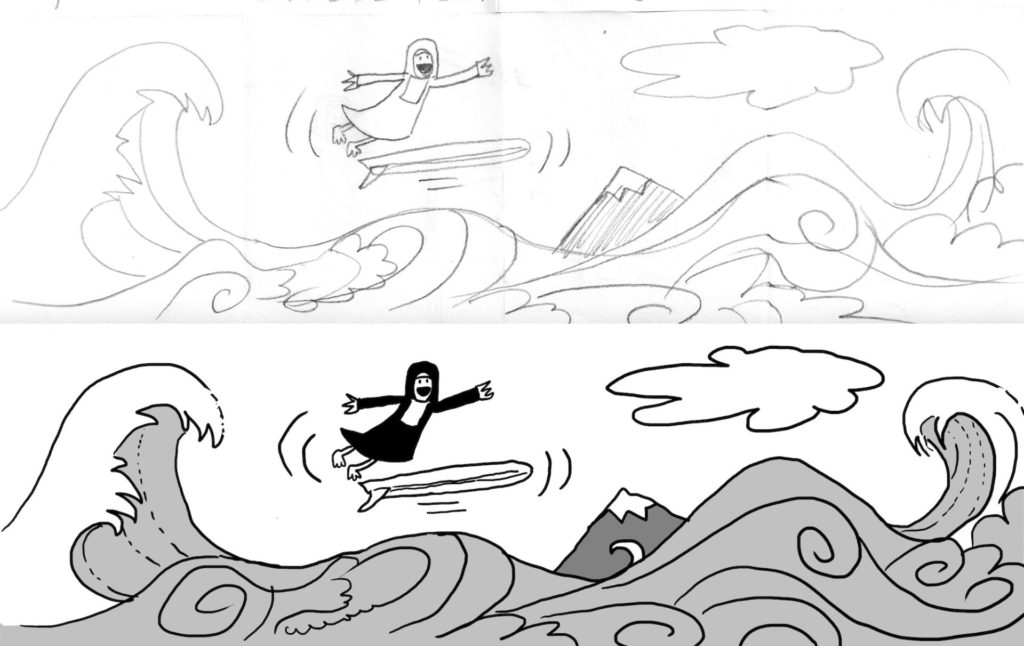
SP: I was browsing your Instagram and saw your post for “Killer Hats Volume II” which you described as “a collection of drawings of Gilded Age hats. These hats included taxidermied birds and the fashion trends of the era led to species decline of shorebirds.” I love this concept so much — where did you get the inspiration for this? Will there be more in the series?
Thomas: This book and the original Killer Hats book were inspired by a trip I took to Everglades National Park. We went on a ranger-led hike and the ranger told us about how the snowy egret was almost wiped out because of the fashion trend during the Gilded Age. I also made one about the near extinction of the American Bison called Takanka. I would love to make more like this, but they take a lot of time to research and write, so it’s pretty slow going.
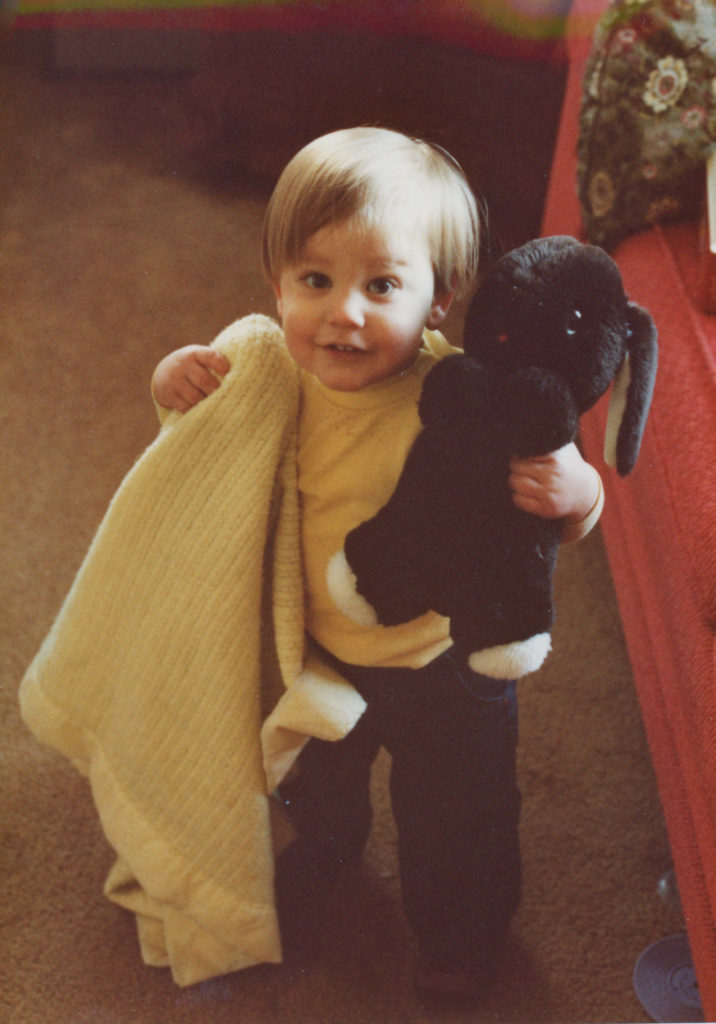
SP: You just released part 7 of My Life in Records, for those who aren’t already familiar, can you talk about this series — how did it come about, how long have you been working on it?
Thomas: My Life in Records is a series of short stories about three brothers who are obsessed with music. It explores how media, such as music, movies, radio, early internet forums, and television mediate their perceptions of the world. They use music both as a way to explore their world and to escape from it.
It’s loosely based on my own experiences growing up in the 80s and 90s. It started as a way to process some of the events in my life that shaped who I became as an adult, but it quickly grew a life of its own. Each of the brothers has a stuffed animal that I based off of the ones we had when we were kids. When the kids are young, and immersed in imaginative play, they turn into the stuffed animal. As they age, anytime they are feeling nostalgic or trying to escape a traumatic experience, they wear an animal mask.
As a young kid, when my brothers and I would play, it really felt like we were in a different reality, and I specifically remember a day when I realized that “magic” was gone, and the toys didn’t do that anymore.
SP: What are you currently working on?
Thomas: I’m currently working on drafts for new chapters of My Life in Records. I have a Patreon where I post a page of a comic once a week, but during the summer, I stop posting and try to start making a bunch of new work so I can have most of the comics queued up when I resume posting on Patreon in October. I also have been carving a lot of linoleum blocks and I’m looking forward to making more block prints over the summer.
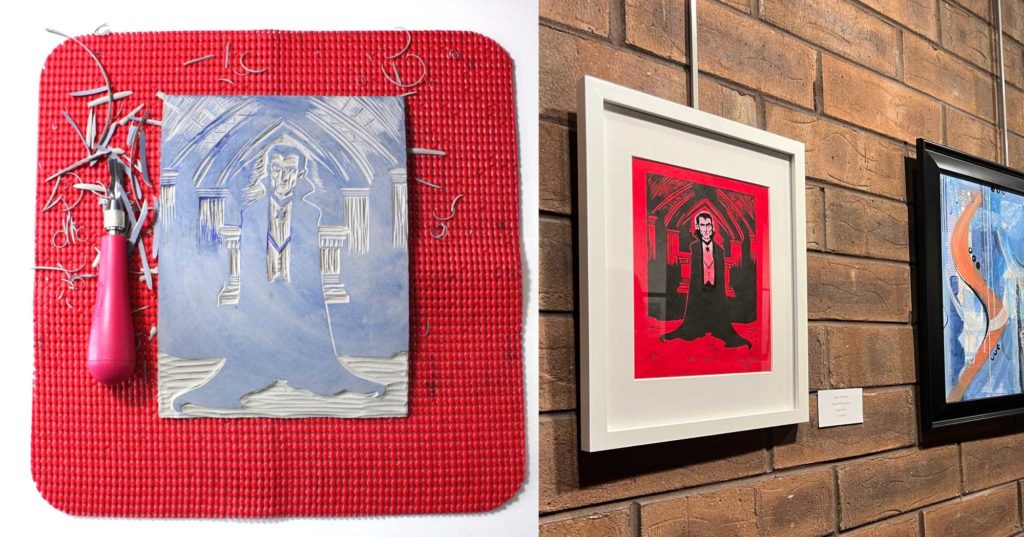
SP: What have been the most rewarding and most challenging projects you’ve completed to date?
Thomas: I have enjoyed the process of researching and writing environmentally themed books like Killer Hats and Tatanka. It’s challenging to do all the research and get all the facts right, but I think people really connect with them.
I also enjoy trying to keep the My Life in Records series fresh. If I’m not careful, those stories can become formulaic. I’m always looking for ways to use the silent medium of comics to depict aural experiences.
SP: If someone wants to check out your work for the first time, do you have something in particular you recommend?
Thomas: I think the third chapter of My Life in Records about the Star Wars’ soundtrack is one of my stronger stories from that series and is a good entry point for new readers. It’s also available to read for free on my website!
If you’re more interested in my non-fiction work, Takanka is the one that makes me the most proud.
Thomas currently has work on display at the Around the Block show at Giertz Gallery at Parkland College. You can also check out his work on his website, Patreon, Facebook, and Instagram.








